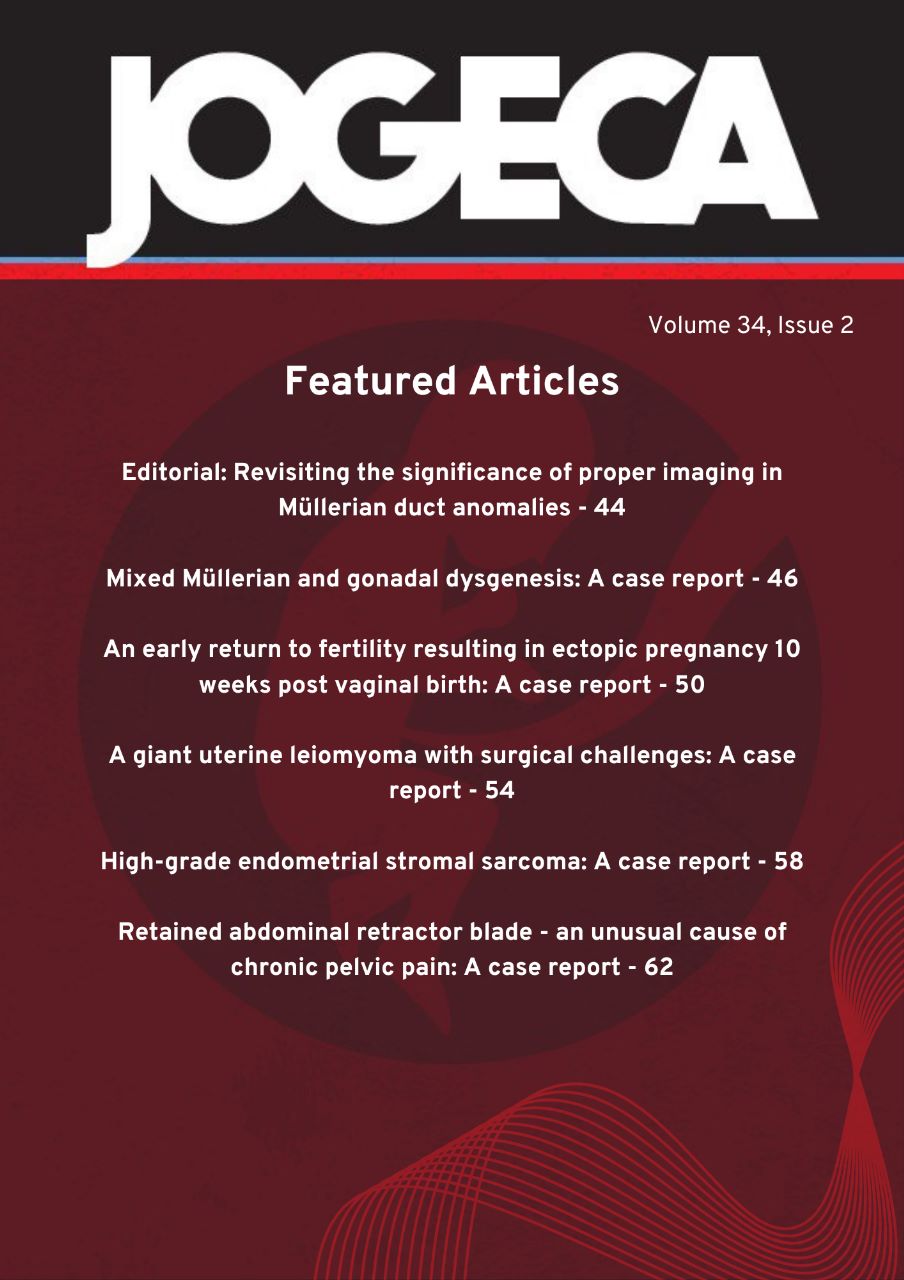MORTALITY FACTORS IN HIGH AND ULTRA-HIGH-RISK GESTATIONAL TROPHOBLASTIC NEOPLASIA AT MOI TEACHING & REFERRAL HOSPITAL: A DECADE-LONG OBSERVATION IN KENYA
DOI:
https://doi.org/10.59692/jogeca.v36i1.100Abstract
Keywords: Gestational trophoblastic neoplasia, mortality, ultra-high risk, chemotherapy
Background:
Prior to the advent of effective chemotherapy, Gestational Trophoblastic Neoplasia (GTN) typically resulted in fatality. The prognosis hinges on early detection and the provision of suitable, timely, and sufficient treatment. In low-middle-income countries (LMIC), delayed patient presentation and suboptimal treatment are common due to challenges such as insufficient staffing, limited resources, and inadequate infrastructure.
Objectives: The objective of this study was to examine incidents of mortality associated with Gestational Trophoblastic Neoplasia (GTN) at a tertiary care facility in Western Kenya over a 10-year period.
Methods: This was a cross-sectional retrospective study involving review of GTN database with supplemental information from medical charts of GTN patients managed at the Moi Teaching and Referral Hospital (MTRH), Eldoret Kenya from January 2013 to December 2022. Bivariate and multivariate logistic regression analysis was done to determine factors that were independently associated with mortality. Survival curves were generated using Kaplan Meier method.
Results: Of the 98 cases analyzed, 71.4% were referrals from a different center. Majority of the women who died had heavy burden disease with 16/31 being ultra-high-risk while 26/31 had FIGO stages 3 and 4 disease. The lungs were the commonest site of metastasis in 39.8% of the cases while 11.2% of the patients had brain metastasis. An ECOG status of >1 (AOR 5.11 (95% CI: 1.543-19.218)), complications arising from either the disease or its treatment (AOR 5.112 95% CI: 1.087-24.045) and HCG levels ≥100000, (AOR 4.733 95% CI: 1.278-17.526) were identified as significantly correlated with mortality.
Conclusion: Mortality associated with GTN is significantly high in LMICs and women with WHO score of ≥ 13 have an increased risk of death. Late presentations at advanced stages of disease, delay in treatment, and poor supportive care as well as healthcare constraints are thought to be predictors of mortality.
Downloads
Published
How to Cite
Issue
Section
Categories
License
Copyright (c) 2024 The Authors.

This work is licensed under a Creative Commons Attribution 4.0 International License.




